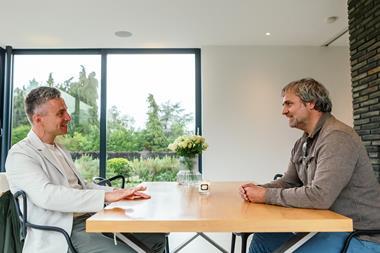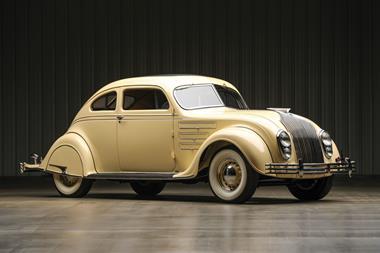IN THIS ISSUE
MAZDA VISION COUPÉ
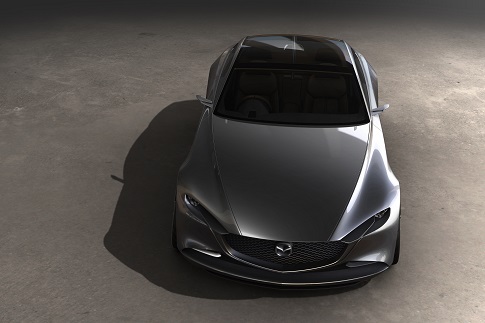
“For the last five years, we’ve been considering what to do with Kodo,” says Kevin Rice, design director, Mazda Motor Europe, referring to Mazda’s ‘soul of motion’ design philosophy. “Is it a purely evolutionary direction we’re going to take, or will we make more dramatic jumps? This process of deciding what to do was a fi ve-year journey, the last two years of which involved perfecting the Vision Coupé.”
The first car seen from this programme was the striking two-door RX-Vision concept (2015). “Parallel to that, we were already working on the Vision Coupé,” says Rice. “They were done together during this fi ve-year journey – but we tuned it [Kodo] after the RX-Vision to take it in a much more elegant, pure, simple way.” He describes RX-Vision and Vision Coupé as the ‘bookends’ for Kodo: the former at one extreme of sensuality, and the latter as representing refi nement and elegance.
Kodo is, says Rice (echoing the presentations made by Mazda’s head of design Ikuo Maeda at the Tokyo motor show), about breathing life and movement into the design. For the exterior, its latest interpretation sees the use of highly-sophisticated surfacing across both positive and concave, negative surfaces to give dynamic and constantly-changing reflections, rather than depending upon fixed lines and features in the architecture.
“The target is creating forms both beautiful and thoughtfully simple, without any unnecessary and unwanted design elements,” Rice adds, “which requires time, patience and discipline. It’s Japanese elegance, it’s the control, it’s the art of light: that’s the future form of movement Kodo will take, and in future, all of our cars will be designed the same way.” And in this more minimalist approach, he says, “the beauty of the space between objects is even more important in the interior of the vehicle.”
NISSAN IMX

Nissan’s studios in China, Europe and the Americas all participated in an initial competition to propose an autonomous crossover EV for the 2020s, but the Global Design Centre in Atsugi, an hour’s drive south-west of Tokyo, completed the final design. Unsurprisingly, therefore, the IMx concept draws extensively on the unique culture and customs of its homeland, and foreigners hoping to understand its design will first need to get their heads around some short Japanese words that express deep and resonant meanings. Take ‘wa’, for example: this means ‘harmony’, but in particular, the compatibility that arises from respecting the needs of others – a principle which shaped the relationship between the interior and exterior of the IMx, says Satoru Tai, Nissan’s executive design director.
SEATING FOCUS

Accommodating the task of driving has shaped cars and their cabins for more than a century, so autonomy challenges our design assumptions – from where and how people sit in a vehicle, to what they might do or expect while in their seats. We speak to seating experts and designers about their visions for the autonomous future, and look at the latest trends in automotive seating design.
TOYOTA TJ CRUISER

Its name comes from ‘t’ for toolbox and ‘j’ for joy, while ‘Cruiser’ is the name Toyota usually gives to its SUV concepts. “There’s the luggage capacity of a van with the lifestyle of an SUV,” said Mai Takeuchi of Toyota Motor Corporation’s business and operations planning division, at the Tokyo motor show. “The large modular cabin makes full use of limited space, just as with a Japanese house. So the square cabin, with also the big nose, tough undercarriage and resilient body panels, expresses the sense of a new genre to appeal to global audiences.” Lead interior designer Toshikazu Tanemura tells us more about the project: “We started in the fall of 2015 with an aim to develop a new genre of SUV matching the lifestyle of youth generations,” he says. “The common feeling within the team was ‘lifestyles where living and play dovetail seamlessly’. We aimed for the multi-purpose car for both work and play.”
TOYOTA FINE-COMFORT RIDE

Created in parallel with the Tj Cruiser at Toyota Global Design Division’s Tokyo Design Laboratory, the Fine-Comfort Ride is Toyota’s vision of the interior of an autonomously-driven fuel cell vehicle. More specifically, it seats up to six with four individual, swivelling pedestalmounted seats supplemented by a small rear bench, accommodated within a diamondshaped cabin that gently widens from the front to the centre, then narrows towards the rear, maximising second-row seat space as well as external aerodynamics; in-wheel motors and wheels at the extreme corners further optimise internal space. It’s much more conceptual than the Tj Cruiser, and very different – both in its character and in how it was developed.
REDSPACE REDS
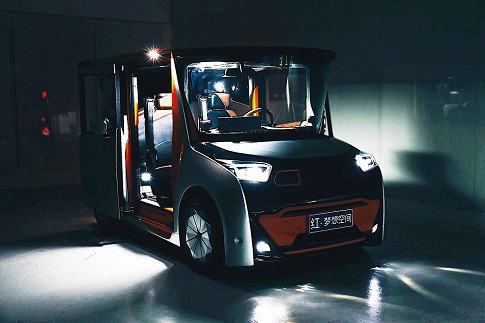
“Perceptually, we think of a car as a moving object – but it isn’t. It’s moving less than 10 percent of its life,” says Chris Bangle. “Once we embrace the idea that it’s the 90 percent of the time when it’s not moving where we can add something – that changed our mind completely about where we wanted to start from.”
The REDS (Revolutionary Electric Dream Space) emerged from a series of workshops in 2014 that Chris Bangle Associates (CBA) led for the China Hi-Tech Group Corporation (CHTC) to explore the future of the EV in Chinese megacities. CHTC then commissioned Bangle and his team to develop the car for Redspace, the new company it founded. The exterior design of the REDS – an ‘alpha prototype’ – was dictated by the interior, and the functionalities in what Bangle calls the ‘90 condition’, the car’s stationary time in which it serves as a personal space.
RENAULT SYMBIOZ
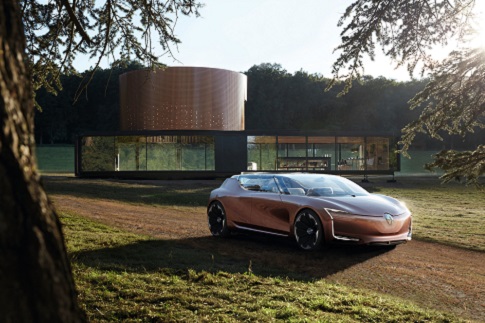
“It symbolises a future which is maybe not so far away,” says Antoine Génin, Renault Group vice-president, interior design and colour and trim, of the Symbioz concept, a vision for 2030. “It has a very sensual, elegant shape and form, with some classic themes, but in another way, it is a real revolution on wheels because it is not only a car, it is an added room in a house. You can drive it, or you can be totally autonomous, but when you go home you can put the car in your living room; you have a place to play video games or read a book, and the car is totally connected with the house.”
The integration is underpinned by the incorporated technologies: firstly, the electrically-powered Symbioz shares its energy with the specially-created ‘H33’ concept house. An AI-enabled smart-grid system predicts electricity demand across both house and car to manage storage and distribution, and the car’s batteries can power the house in the event of a supply outage or during peak times. The household’s digital files are also shared between house and car for music, social media, entertainment or remote working, along with IoT capability to monitor and engage with home devices, appliances, heating, lighting, security systems and suchlike.
To further underline and highlight the connection, the colours and materials deployed were shared and reflected between the house and the car, the Renault team collaborating with a series of product and textile designers as well as technical partners. This project was “really a dream for a designer,” smiles Génin. “For instance, to have real fashion materials inside, to have seats which are turning: you can work halfway between being an architect and a car designer, and it seems this will be a reality in a few years. It’s not only an exercise.”
Magazine



































